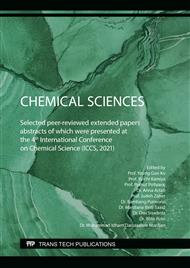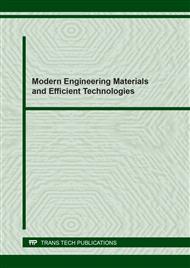p.88
p.95
p.106
p.114
p.122
p.129
p.137
p.146
p.153
Vegetable Oils Based Ionic Liquids for Rare Earth Elements Recovery: A Techno-Economic Analysis
Abstract:
This study aims to evaluate the feasibility of the yttrium recovery from compact fluorescent lamp waste using methyltrioctylammonium peanut oil ([N1,8,8,8][PO]) compared to methyltrioctylammonium naphthenic acid ([N1,8,8,8][NA]) and tetraoctylphosphonium oleate ([P8,8,8,8][Oleate]) on a large scale. Based on the techno-economic analysis, the process was feasible on a large scale commercially due to changes in economic parameters such as gross profit margin (GPM), payback period (PBP), break-even point (BEP), break even capacity (BEC), cumulative net present value (CNPV), profitability index (PI), internal rate return (IRR), and return on investment (ROI) tend to be positive with the greatest profit when using [P8,8,8,8][Oleate] compared to [N1,8,8,8][NA] and [N1,8,8,8][PO] under ideal conditions and the use of [N1,8,8,8][PO] can still be profitable under non-ideal conditions with certain fluctuation limits.
Info:
Periodical:
Pages:
122-128
Citation:
Online since:
May 2022
Price:
Сopyright:
© 2022 Trans Tech Publications Ltd. All Rights Reserved
Share:
Citation:



